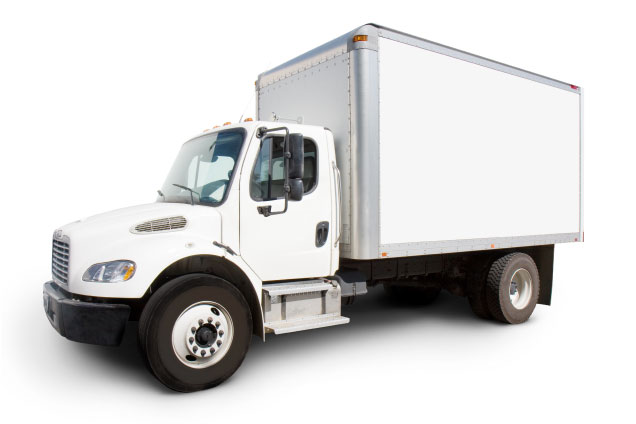Essential Tips for Storing Your Sofa Long-Term
Posted on 17/05/2025
Essential Tips for Storing Your Sofa Long-Term
The sofa stands as the heart of many living rooms -- a place where memories are made and relaxation is found. Whether you're moving, downsizing, undergoing renovations, or simply need to store extra furniture, knowing the best practices for long-term sofa storage is crucial. Improper storage methods can result in damage, staining, warping, and even mold growth, all of which can drastically reduce your sofa's lifespan. If you're considering putting your couch away for an extended period, read on for an informative and comprehensive guide on how to store your sofa long-term.
Why Correct Sofa Storage Matters
Your couch is often one of the most expensive and frequently used pieces of furniture in your home. Protecting your sofa during long-term storage is not just about convenience--it's about preserving your investment. When you store your sofa incorrectly, you risk:
- Mildew and mold from moisture buildup
- Pest infestations leading to chewed fabric and stuffing
- Frame warping due to uneven support or pressure
- Fading and cracking of upholstery from fluctuations in temperature and light
- Unpleasant odors caused by mildew, pests, or airtight storage mistakes
That's why it's essential to follow expert advice for storing your couch long-term. Let's dive into detailed, actionable tips for preserving your sofa so it's ready for use--whenever you need it again.

Prepping Your Sofa for Long-Term Storage
1. Thoroughly Clean Your Sofa Before Storage
Never overlook cleaning your sofa prior to storage. Dirt, crumbs, and stains can become much harder to remove over time, and they may also attract pests or foster mold growth.
- Vacuum all surfaces, paying extra attention to cracks and crevices where debris can hide.
- Spot clean stains with a suitable cleaner for your sofa's fabric type. For leather sofas, use a leather cleaner and conditioner; for upholstery, use a fabric-safe detergent.
- Remove and wash removable pillow covers and cushion cases according to the manufacturer's instructions.
If your sofa has any lingering odors, sprinkle baking soda on the cushions and let it sit for 15-20 minutes before vacuuming it off.
2. Disassemble If Possible
Breakdown your sofa into manageable pieces if feasible. This can save storage space and minimize the risk of bending or damaging fragile components.
- Remove legs and detachable arms, labeling and storing screws and bolts in a sealed bag taped to the frame so they don't get lost.
- Take off removable cushions and store them separately to avoid deformation.
- Fold out beds or recliners in their natural positions to reduce stress on mechanisms.
3. Protecting Upholstery and Frame
The key to proper couch preservation is protection from dust, moisture, and pests during storage.
- Wrap the entire sofa with breathable covers or moving blankets. Avoid plastic wrap directly on the upholstery, as it can trap moisture and cause mold.
- For extra protection, use sofa storage covers made from cotton or tarp, allowing air circulation.
- Elevate sofa legs on wooden pallets or blocks to keep it off the ground and safe from potential flooding or damp floors.
If you must use plastic, wrap it loosely and punch small holes for ventilation--but this is less ideal than using fabric covers.
Choosing the Right Storage Environment
Climate Controlled vs. Standard Storage Units
The storage environment is critical for your couch's longevity. A climate-controlled storage unit keeps consistent temperature and humidity, reducing the risk of warping, mildew, and cracking, especially for leather or antique wood frames.
- Climate-controlled units: Best for long-term storage, especially in regions with extreme temperatures or humidity.
- Standard units: More affordable, but riskier for sensitive materials and long-term preservation.
Preparing the Storage Area
Before you move your sofa into storage, take these extra steps for maximum protection:
- Sweep and clean the storage unit to remove dust, debris, and insects.
- Lay down a moisture barrier such as a tarp or thick sheeting before placing pallets.
- Place silica gel packets or desiccants around your sofa to absorb excess moisture.
- Sit your sofa in the middle of the unit if possible, away from walls which can harbor dampness.
Packing Strategies for Sofa Storage
Optimal Positioning and Load Distribution
How you position your sofa during storage matters:
- Store your sofa upright on its legs as it would be in normal use to maintain its structural integrity.
- Avoid stacking heavy boxes or objects on top of the sofa, which can cause fabric indentations or frame distortion.
- Maintain clear space around the sofa for ventilation and easier access.
If you're storing other furniture, use vertical space efficiently but keep heavy or sharp items far from your stored couch.
Special Considerations for Leather Sofas
Leather requires additional care, as it's more susceptible to temperature changes and humidity.
- Condition the leather with a high-quality conditioner before wrapping to maintain softness and prevent cracking.
- Never wrap in plastic; instead, use a breathable cotton sheet or cloth cover.
- Avoid exposure to direct sunlight, even through windows in storage units, as this can fade and dry the leather.
Long-Term Maintenance While in Storage
Periodic Checks
If possible, visit the storage unit every few months to inspect your sofa's condition.
- Uncover and air out the sofa for a while to release any trapped moisture.
- Check for signs of mold, pests, or abnormal odors.
- Reapply leather conditioner if necessary, or adjust covers if they've slipped.
This practice helps you catch and address any issues before they cause permanent damage.
Pest and Mold Prevention
Even in the cleanest conditions, pests and mold can become a risk during long-term storage.
- Use pest deterrents like cedar blocks or lavender sachets, avoiding anything with strong chemicals that could stain or leave odors.
- Change desiccants or silica packs as they become saturated.
- Keep food, crumbs, or organic materials out of the storage area to avoid attracting rodents and insects.
How to Restore Your Sofa After Storage
Careful Unwrapping and Cleaning
When it's finally time to retrieve your sofa after a period in storage, take care in the process to avoid damaging fragile fabrics or parts.
- Remove covers and blankets gently to prevent snags or tears.
- Vacuum and clean the upholstery once more, focusing on removing any dust or possible mildew spots.
- Let the sofa air out in a dry, ventilated space for several hours before using it indoors.
- If you spot any stains or damage, treat them immediately according to your sofa's fabric type.
Reassemble and Condition
Reattach any disassembled parts, ensuring screws and legs are tight and secure. For leather sofas, apply another round of conditioner and buff gently. For fabric sofas, check cushion shape and fluff as needed for comfort and appearance.
Bonus: Common Mistakes to Avoid in Sofa Storage
- Skipping cleaning: Storing your sofa dirty can permanently set stains and attract pests.
- Using airtight plastic wrap: Traps moisture, leading to mildew and fabric damage.
- Placing sofa directly on the ground: Increases risk of moisture absorption and mold.
- Ignoring local climate: Not using climate-controlled storage in humid or fluctuating environments can ruin furniture over time.
- Stacking heavy items on top: Causes sagging, indentations, and frame damage.

FAQ About Long-Term Sofa Storage
How long can I safely store a couch?
With proper preparation and the right storage environment, you can safely store your sofa for many months or even several years.
Do I need to clean my sofa again after storage?
Yes, always clean and air out your sofa after storage to remove dust, potential mildew, or odors before use.
Can I store my sofa long-term in a garage or attic?
It's not recommended, as these areas are prone to temperature fluctuations, humidity, and pests. Opt for a clean, climate-controlled storage unit whenever possible.
Should I disassemble my sofa for storage?
Disassembling as much as possible makes transport and storage easier and reduces the risk of damage. Label hardware clearly for easy reassembly.
Conclusion: Best Practices for Storing Your Sofa Long-Term
Long-term sofa storage doesn't have to be stressful. By cleaning and wrapping your sofa thoroughly, choosing the right storage environment, and periodically checking in, you can keep your couch in excellent condition for years to come. Remember, a little extra effort today can save you the cost and heartache of replacing a cherished piece of furniture in the future.
Invest in proper sofa storage--your furniture (and your future self) will thank you!





